Family : Tabanidae

Text © Prof. Santi Longo

English translation by Mario Beltramini
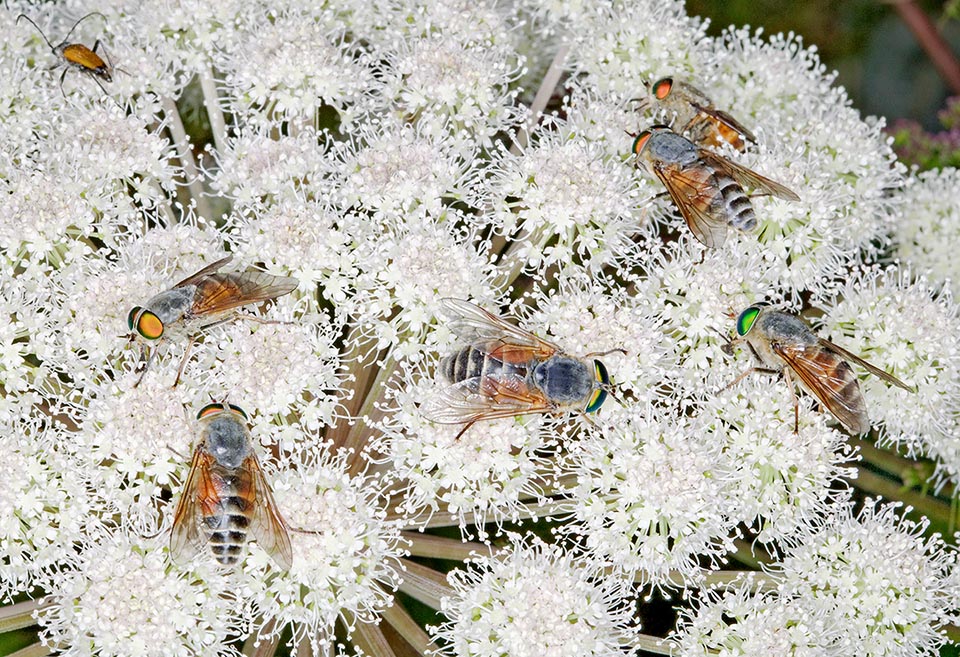
Philipomyia aprica is a very common horsefly in summer on flowers of Apiaceae in meadows, peat bogs and mountain pastures of various Eurasian sites © Giuseppe Mazza
The Horsefly Philipomyia aprica (Meigen, 1820) is a Dipteran of the family Tabanidae that includes about 3.500 medium and large species, up to 20 mm long, distributed throughout the world.
They are characterized by large compound eyes, often iridescent, more developed in the males having often an holoptic head, that is with eyes extending over the back until they join in the frontal area.
The buccal apparatus is of the piercing-sucking type, more robust in the females who, after the fecundation, are in need of proteins and must suck the blood from the wounds inflicted on the mammals for ripening the eggs.
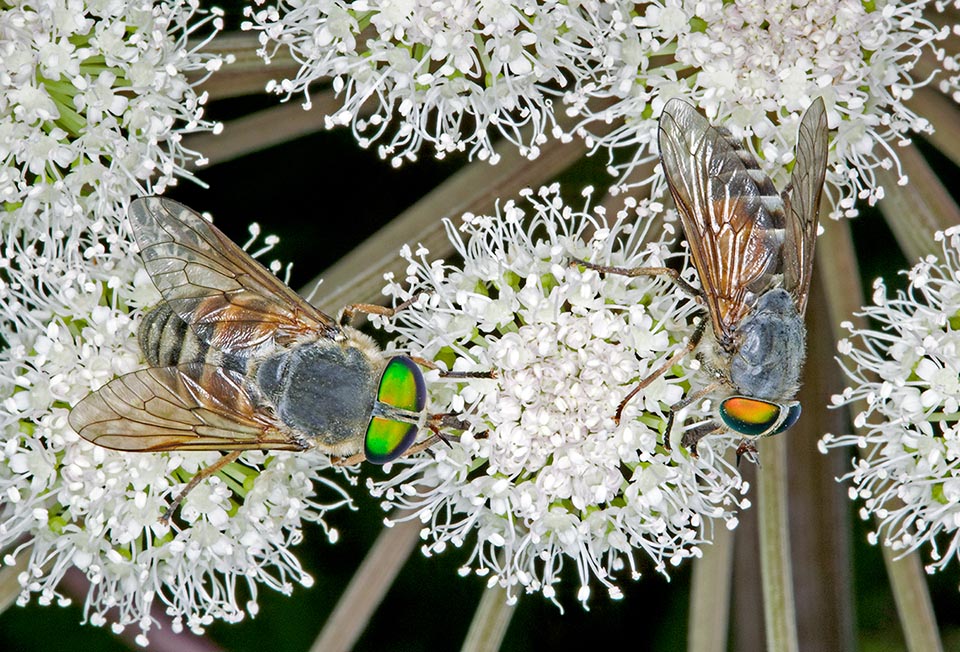
Two females. The large compound eyes are reddish with bright green reflections, as often occurs, according to the incidence angle of the light © Giuseppe Mazza
The males feed on the serums flowing from the wounds as well as on sugary liquids and pollen.
Many species are of medical-veterinary importance as they can transmit various diseases such as filariasis, trypanosomiasis, anthrax.
The name of the genus Philipomyia is not of clear interpretation. It could be composed in ancient Greek by “phil“, friend and by “myia”, fly, maybe because it is a fly seen often together, like a friend, with certain mammals, especially cattle and horses to which it sucks the blood, but, even more simply with a minor transcription error, from “Philippomyia“, that is “the fly that loves the horses”.
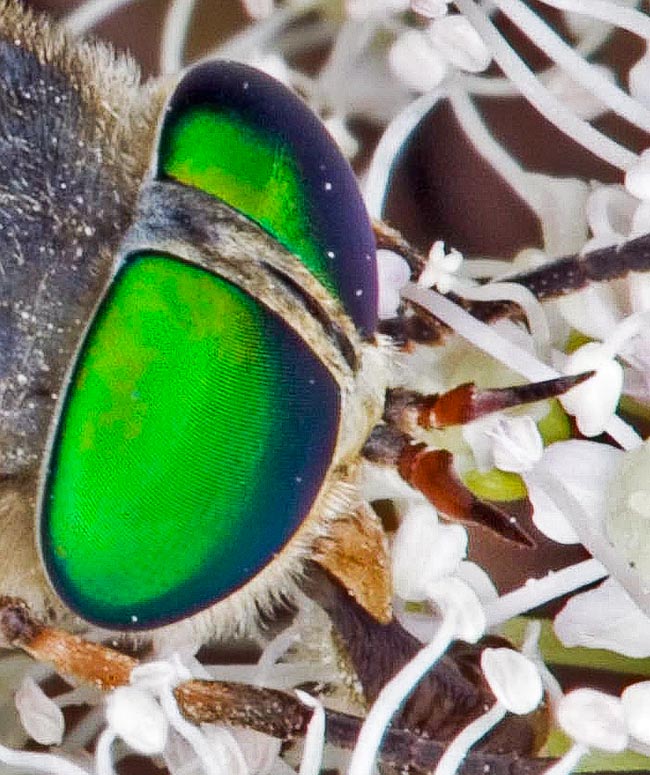
In fact, these have the compound eyes more spaced than the males and with a different curvature. Moreover, note the antennae pointed teeth facing forward that help to distinguish the species from the congener Philipomyia graeca © Giuseppe Mazza
The specific term aprica, in Latin “sunny, well exposed to the sun” is conversely a clear reference to the locations frequented by the adults.
Zoogeography
Philipomyia aprica is present from Spain to France, North and South Italy, Belgium up to the south of the Carpathians, to European Russia and to Caucasus, in the Middle East and in Central Asia.
Ecology-Habitat
During the summer period it is one of the most common gadflies especially in the meadows, in the peat bogs and in the mountain pastures where the adults visit the flowers of Apiaceae and feed on nectar and pollen.
The females, very active, scour the territory and once fecundated they are attracted by the odours emitted by the big ruminants but they may sting humans too.
Morphophysiology
The body of the adults is stocky; the females measure about 18 mm, whilst the males about 15 mm.
The antennae third article is dark red with a brown tip and a small tooth in the upper part.
The shape is more pointed and facing forward than that of the congener Philipomyia graeca (Fabricius, 1794) whose body is basically reddish, present in North Italy.
The compound eyes are very large, their colour is red-brown with bright green reflections that vary in intensity depending on the angle of incidence of the light. For this reason in the females, being slightly spaced, they appear mostly green, whilst in the males that have them dorsally in contact, are red.
The dorsal part of the second segment of the thorax, or metathoracic tergite, is more or less brown in colour and hairy, the legs are yellow-brownish.
The translucent wings are yellow-brownish. The second pair of wings is transformed in yellow-brownish halteres.
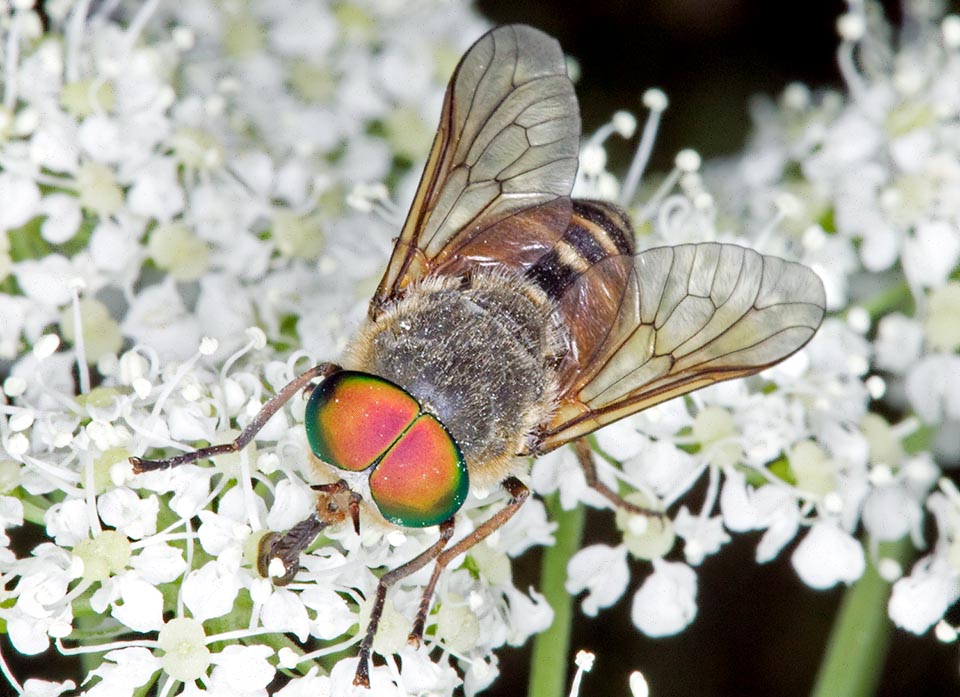
Male while eating pollen and nectar. When it occurs, it also sucks the serum of wounds inflicted by females to various mammals, mainly cattle or horses © Giuseppe Mazza
The segments of the abdomen are brownish with a light lower border. The eggs are fusiform, streaked with greyish colour.
The larvae are whitish, fusiform, with small head, are of amphipneutic type, that is, equipped with respiratory stigmata in the first segment and with abdominal stigmata that flow into a siphon-like structure.
Ethology-Reproductive Biology
The adults are floricolous and feed on pollen and nectar.
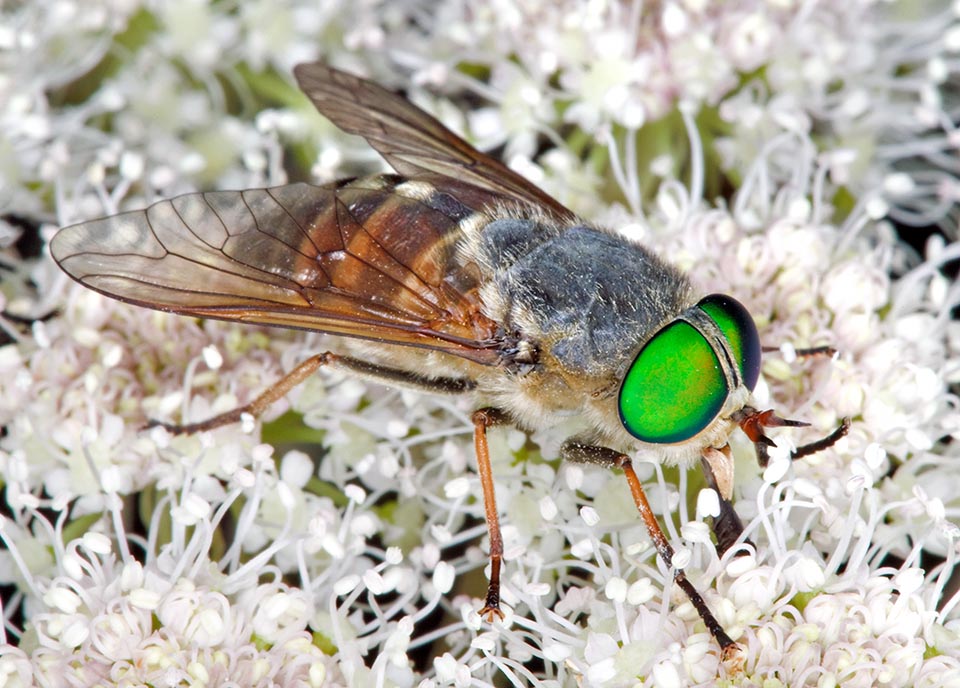
In this female can be seen the sharp blades of the buccal apparatus that cut blood into the skin of the mammals. To lay about one hundred eggs in swampy zones, they in fact need about 0,4 g of blood per day. The larvae, to transform in pupae and then in adults, prey for two years small insects, crustaceans, mollusks and nematodes © Giuseppe Mazza
Matings take place in the morning and evening hours and the females need to assume about 0,4 g of blood per day to lay about one hundred eggs in the marshy areas where the larvae prey on small insects, crustaceans, mollusks and nematodes.
The larvae live about two years during which they perform numerous moultings before transforming in pupae and then in adults.
Synonyms
Tabanus apricus Meigen, 1820; Tabanus infuscatus Loew, 1858; Tabanus zizaniae Leclercq, 1957.
